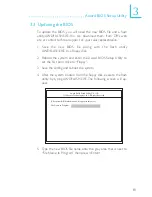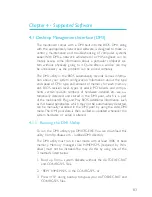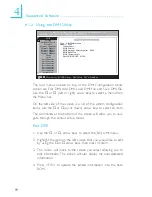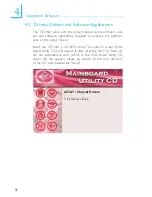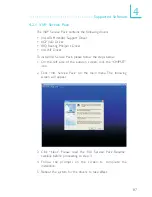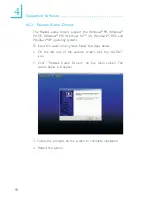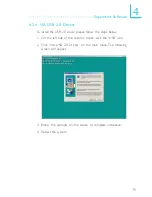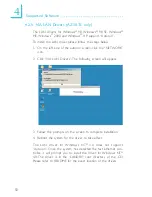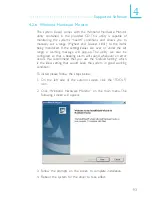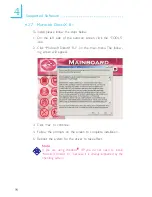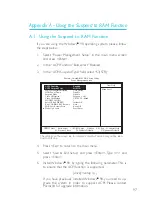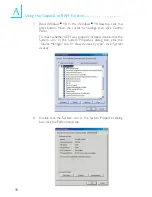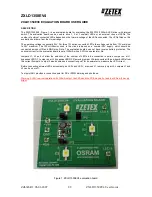
83
4
Supported Software
4.1 Desktop Management Interface (DMI)
The mainboard comes with a DMI built into the BIOS. DMI, along
with the appropriately networked software, is designed to make in-
ventor y, maintenance and troubleshooting of computer systems
easier. With DMI, a network administrator or MIS engineer can re-
motely access some information about a particular computer sys-
tem without physically going to it. Quite often a service call may
be unnecessary as the problem can be solved remotely.
The DMI utility in the BIOS automatically records various informa-
tion about your system configuration. Information about the type
and speed of CPU, type and amount of memory for each memory
slot, BIOS revision level, types of add-in PCI boards and compo-
nents, certain revision numbers of hardware installed, etc. are au-
tomatically detected and stored in the DMI pool, which is a par t
of the mainboard's Plug and Play BIOS. Additional information, such
as ISA based peripherals, which may not be automatically detected,
can be manually recorded in the DMI pool by using the Add DMI
menu. The DMI pool data is then verified or updated whenever the
system hardware or setup is altered.
4.1.1 Running the DMI Utility
To run the DMI utility, type: DMICFG.EXE. You can download this
utility from ftp.dfiusa.com - /utilities/DMI directory.
The DMI utility must run in real mode with at least 180K of base
memor y. Memor y managers like HIMEM.SYS (required by Win-
dows) must not be installed. You may do this by using one of the
3 methods listed below.
1. Boot up from a system diskette without the AUTOEXEC.BAT
and CONFIG.SYS files,
2. “REM” HIMEM.SYS in the CONFIG.SYS, or
3. Press <F5> during bootup to bypass your AUTOEXEC.BAT and
CONFIG.SYS files.
Chapter 4 - Supported Software













